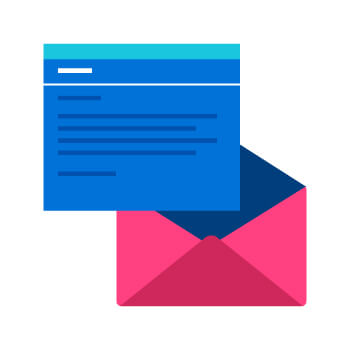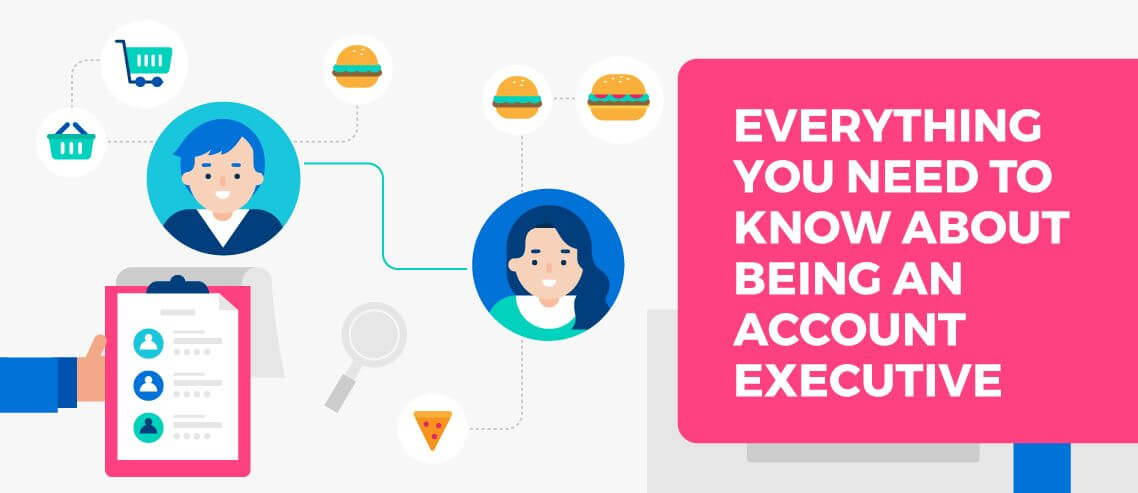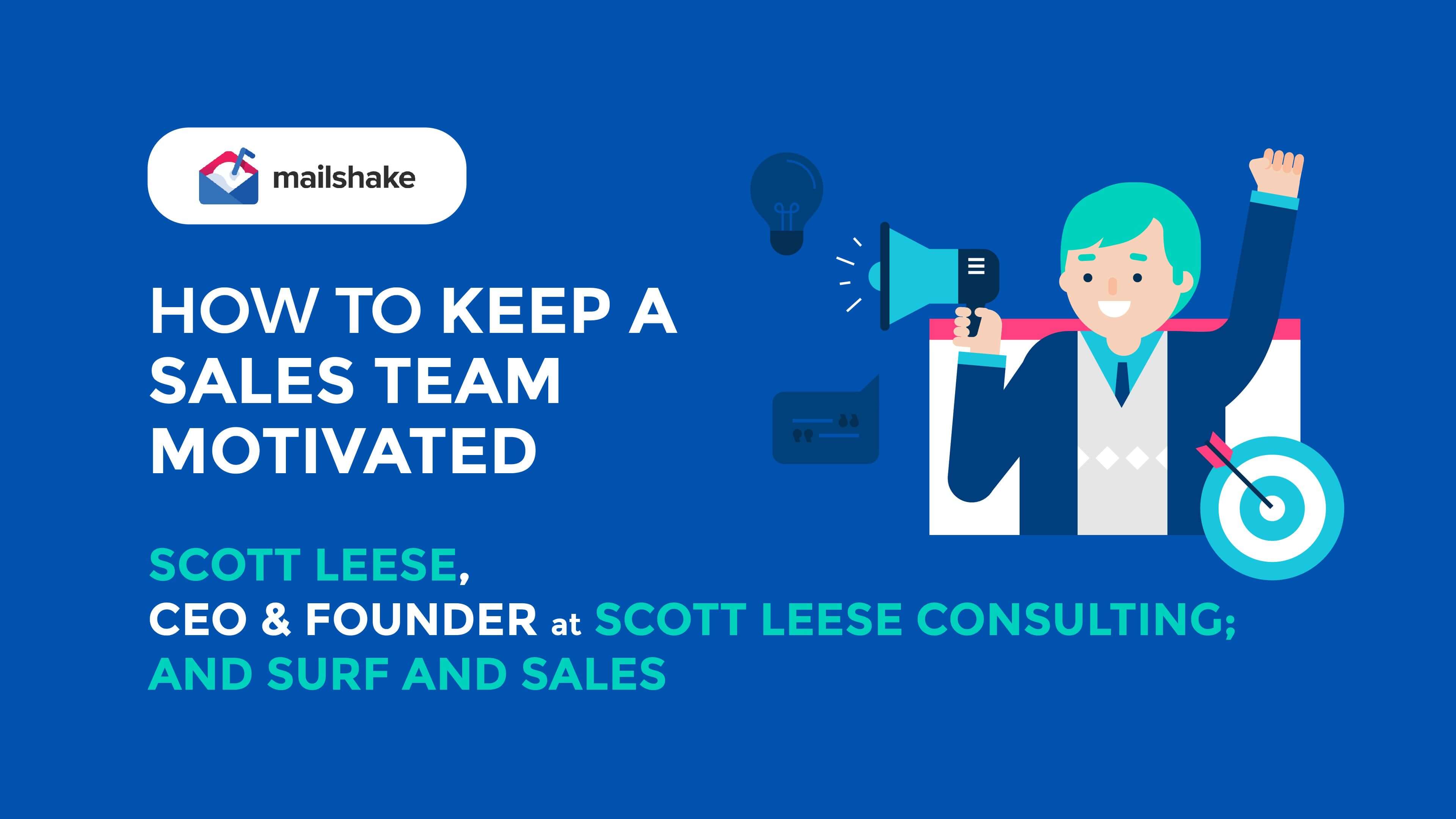5 B2B Lead-Generation Content You Need to Drive Sales in 2020

Contents
B2B sales reps have an endless number of responsibilities, but one takes precedence over them all: lead generation.
While there are many ways to generate leads, the creation and use of high-quality, targeted content is among the best.
But that leads to a few questions:
- What types of B2B lead-generation content should you create?
- Can you personally create the content, or should you work with your marketing department?
- How can you make sure the content you create moves the needle?
There is no right or wrong answer to these questions, as it’s based largely on industry, target audience, past results (and failures), and goals.
Need a push in the right direction? Let’s examine five types of content you need to generate a regular flow of leads.
Lead-Generation Content #1: Cold Email Template

Cold emailing sounds simple enough. You organize your list, throw together a subject line and body, and blast out the email. From there, you wait for the leads to roll in, right?
Wrong!
A successful cold email strategy is much more advanced than that. Your success starts with the creation of several templates.
Maybe you create two templates for each segment of your list. Or maybe you create three templates for every recipient, allowing you to A/B test each one.
The possibilities are endless, but you can’t do anything until you actually create the templates.
In my last blog post, I outlined what happened when I cold emailed 200 Inc. 5000 companies.
Spoiler alert: I generated $22,500 from just 200 emails.
A large part of my success was the creation, use, and testing of three distinct templates. It took me 45 to 60 minutes to write each one, but in the end it was well worth it.
SEE THE TEMPLATES HERE: What Happened When I Cold Emailed 200 Inc. 5000 Companies?
The fun thing about cold emailing is that there is no exact science to guide your strategy. Create templates based on your experience and knowledge, track your results, and continue to tweak your approach.
Lead-Generation Content #2: Sales Scripts

I hesitate to talk too much about sales scripts. Please don’t misunderstand: You should never read a sales script line-by-line to a prospect. When cold calling, this is a surefire way to hear a dial tone on the other end of the line.
However, you don’t want to jump into a call without an idea of what you’ll say. Sure, you’ll become a natural over time, but even then it’s always nice to have some support nearby.
Rather than write out everything you want to say word-for-word, create a sales script that’s full of talking points.
For example, if you’re a sales rep selling a SaaS solution to small to midsize businesses, your talking points may include:
- Feature list
- Unique selling proposition
- Answers to common questions
Your sales script should be short and sweet. Too much content makes it difficult to follow, especially when you need to think on your feet.
Lead-Generation Content #3: One-Pager
You’ve heard a lot about one-pagers, but you may not know exactly what it means to you as a sales rep.
In simple terms, a one-pager is a one-page document that provides an overview of your business, product, and/or service.
There are many ways to use a one-pager to generate leads:
- Use it as talking points when making sales calls
- Slice it up and turn it into a cold email
- Distribute it to your target list via email, snail mail, or in-person (such as at conferences)
- Add it as a download on your website
Here are some keys to creating a highly engaging one-pager:
- Make full use of the headline
- Provide content in an easily skimmable form, such as bullet points
- Include at least one testimonial and/or success story
- Talk up the features of the product or service
- Tell the prospect how to get in touch (or better yet, how to buy)
I recently reworked my one-pager and to date I’ve shared it with 52 prospects via email (after receiving their permission). Here are the results:
- 36 people never responded.
- 7 responded with “No thanks.”
- 6 responded with “Thanks, can we set up a call?”
- 3 shared more information and requested a quote.
Of the nine targets that turned into leads, I closed two deals.
From my experience, a four percent close rate from a one-pager shared via email is above average. Of course, I’ll continue to tweak it to see if I can boost that number.
Here’s a copy of the one-pager I use. (Feel free to customize it to suit your needs.)
Lead-Generation Content #4: Slide Deck

Depending on your product/service and sales cycle, there’s a good chance a presentation — complete with a slide deck — will be one of the last things you do before hearing yes or no.
It doesn’t matter if you’re presenting in person or via screen share, your slide deck should impress. Here are some tips:
- Avoid long-winded content.
- Don’t let the design overpower the words.
- The flow of the content is as important as the content itself.
- Consistency from beginning to end is a must.
Tip: rather than tackle the entire process on your own, work with your marketing department to create an impressive slide deck that’ll boost your conversion rate.
Marketers and sales reps see things differently. For example, a member of your marketing team is more likely to pay attention to consistency and clarity, while you’re most interested in content that sells.
There’s a balancing act here, so it never hurts to bring others into the process.
Are you stuck? Visit LinkedIn SlideShare for inspiration. Search for slide decks in your industry, break down the content and design, and use your findings to your advantage.
For example, this slide deck has 1,241,638 views and counting.
It’s safe to say this deck, among many others, can teach you a thing or two.
Lead-Generation Content #5: Case Studies
I know what you’re thinking. You don’t have time to create case studies. Luckily, you may not have to.
There’s a good chance your marketing department has done all the heavy lifting for you. Ask them if they’ve created case studies you can share with prospects. Also, search your company’s website for them.
Here’s an example of an agency that uses case studies to hook prospects. Every case study is broken down into six sections:
- Eye-catching headline
- Introduction
- Solution
- Customer quote
- Methodology
- Results
But wait, I don’t have access to any case studies!
Well, it’s time to take the bull by the horns.
If your competitors have published case studies on their website, review them to better understand the approach they’re taking, what you like, and what you don’t like.
From there, consult with your marketing department on next steps. Maybe they can take the lead if you tell them what you’re going for. Or maybe you can collaborate on the project to ensure that the content and design is suitable for many uses, not just sales.
Here’s an overview from Ashford University that explains how to write a case study. In the most basic form, it includes:
- Prepare the case.
- Draft the case.
- Finalize the case.
Final Thoughts
The most successful sales reps use content to generate leads and close deals.
These five types of content are a great place to start, but don’t stop here. If there’s something else that has the potential to produce results, go for it.
The more content you create, the better you’ll understand what does and doesn’t work. And that will eventually lead you to a strategy that pays off by way of more leads.





